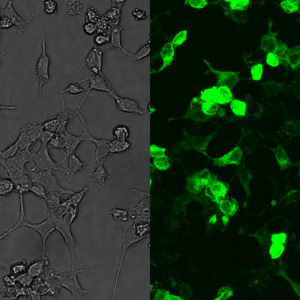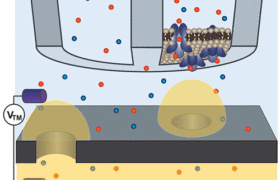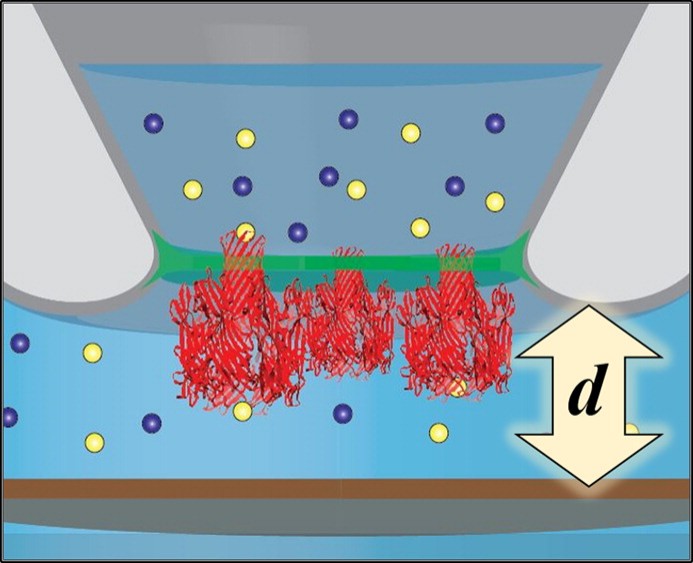
The bakergrp developed ion channel probes (ICP) for SICM to expand the functional sensing capabilities of SICM. The initial stage of ICP-SICM was developed in 2014 by Yi Zhou in collaboration with Craig Aspinwall’s group at the University of Arizona, where α-hemolysin was incorporated within a black lipid membrane at the tip of the pipette. This initial study was key at determining key parameters that were necessary to make ICPs a reality. Many advances have been achieved since then. In the present iteration, ICPs are constructed on dual barrel pipettes by excising a membrane patch via “sniffer-patch” technique which contains ion channels, a route first demonstrated in our lab by Wenqing Shi in collaboration with Ted Cummins at IUSM.
In the sniffer-patch approach, the dual barrel pipette has one open barrel that functions as the SICM barrel which is used for feedback and to obtain topography. The second barrel houses the ion channel probe that is used for selective chemical sensing by monitoring the ion channel activity.
ICP-SICM can be utilized with different ligand-gated ion channels to enable nanoscale maps of local information.
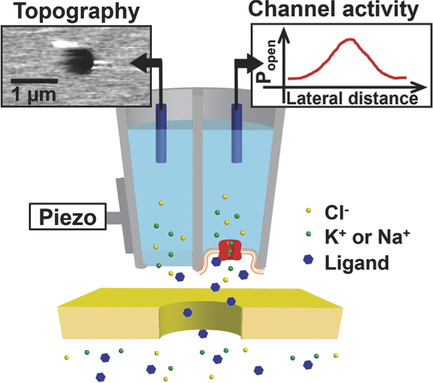
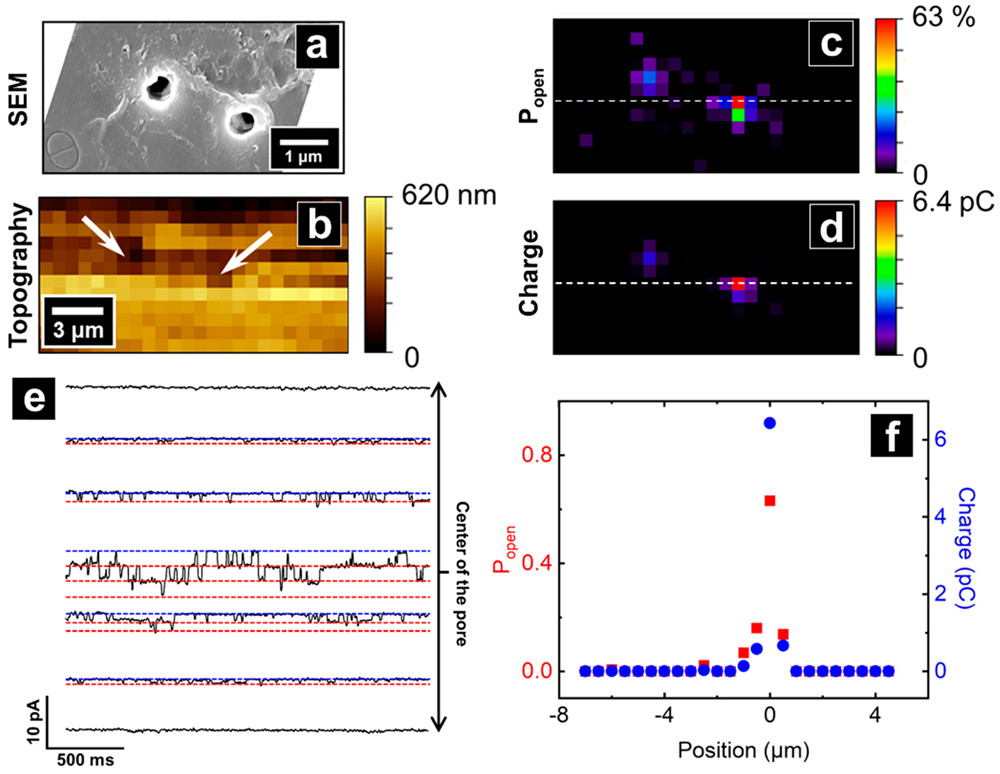
The bakergrp has utilized big potassium (BK) channels to detect calcium ions and transient receptor potential vanilloid 1 (TRPV1) channels to detect capsaicin. Most recently, Cheng Zhu and Kaixiang Huang showed that TRPV1 channels could be used as a sensor for local potential measurements. This allowed real imaging with ICPs. Correlated maps of topography and ion channel response, either open state probability or charge passed at each pixel allowed a potential-dependent response to be collected at interfaces.
Ongoing work with ICPs is underway to probe chemistry at individual cells, with the opportunity to measure nonelectroactive species at subcellular scales.
